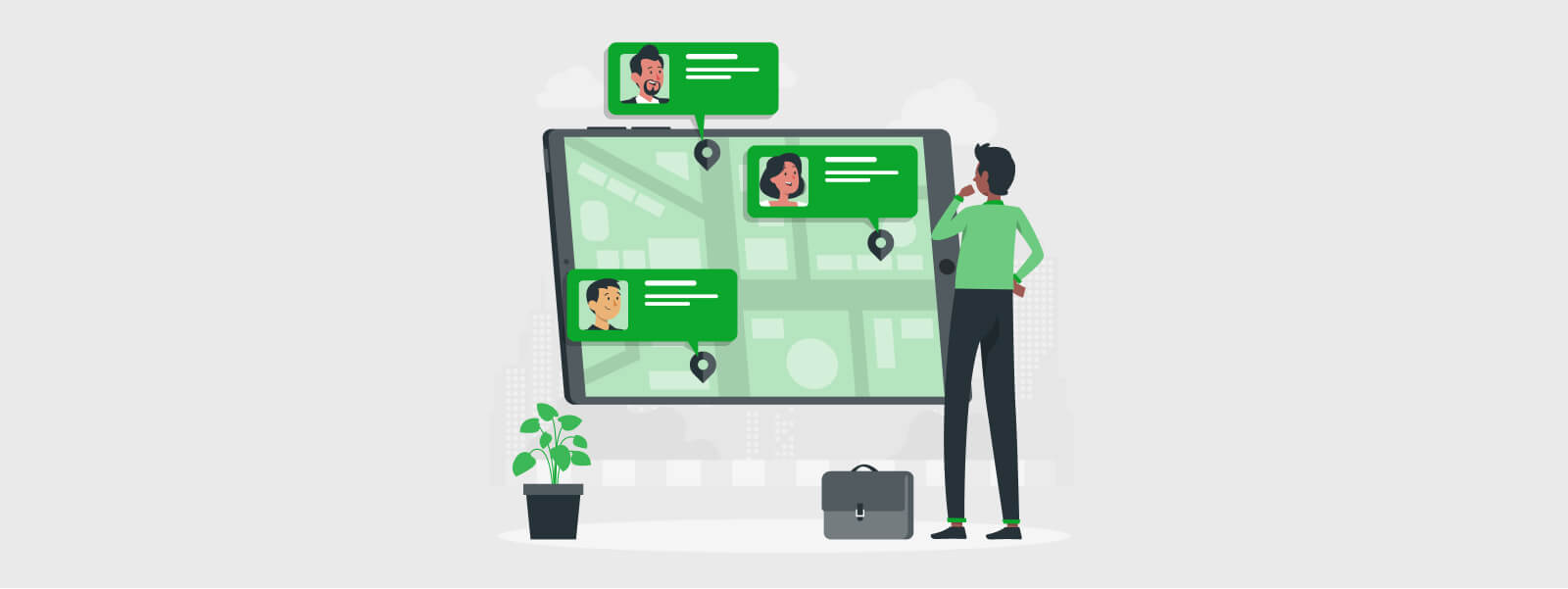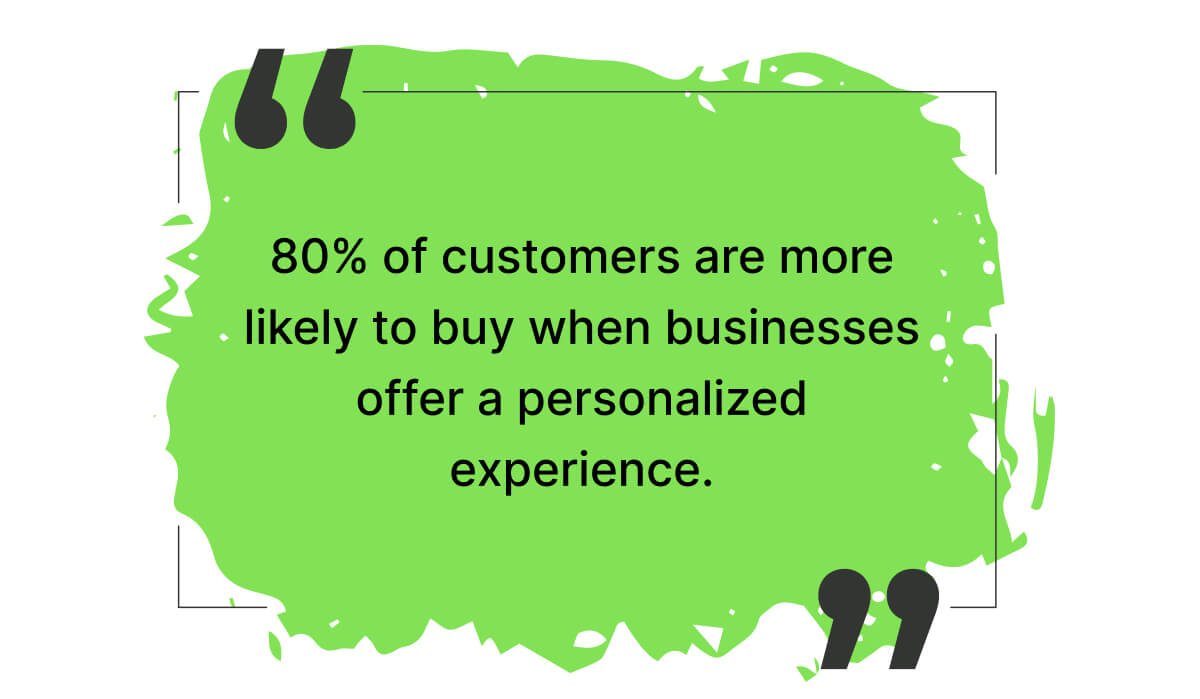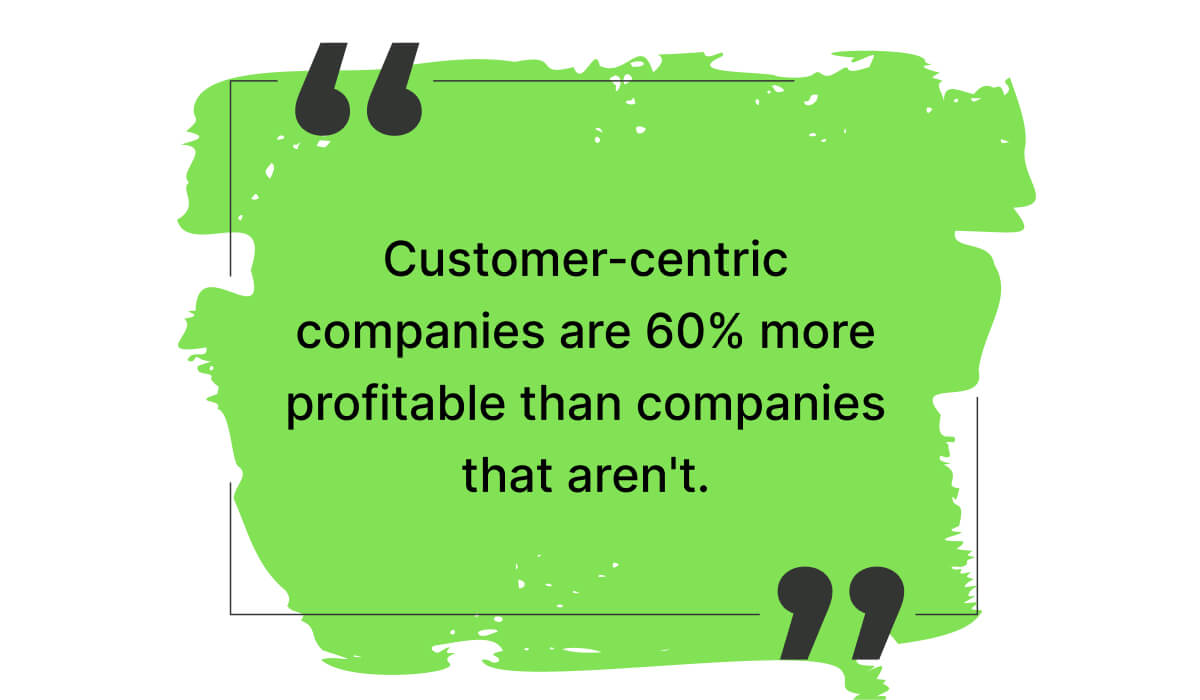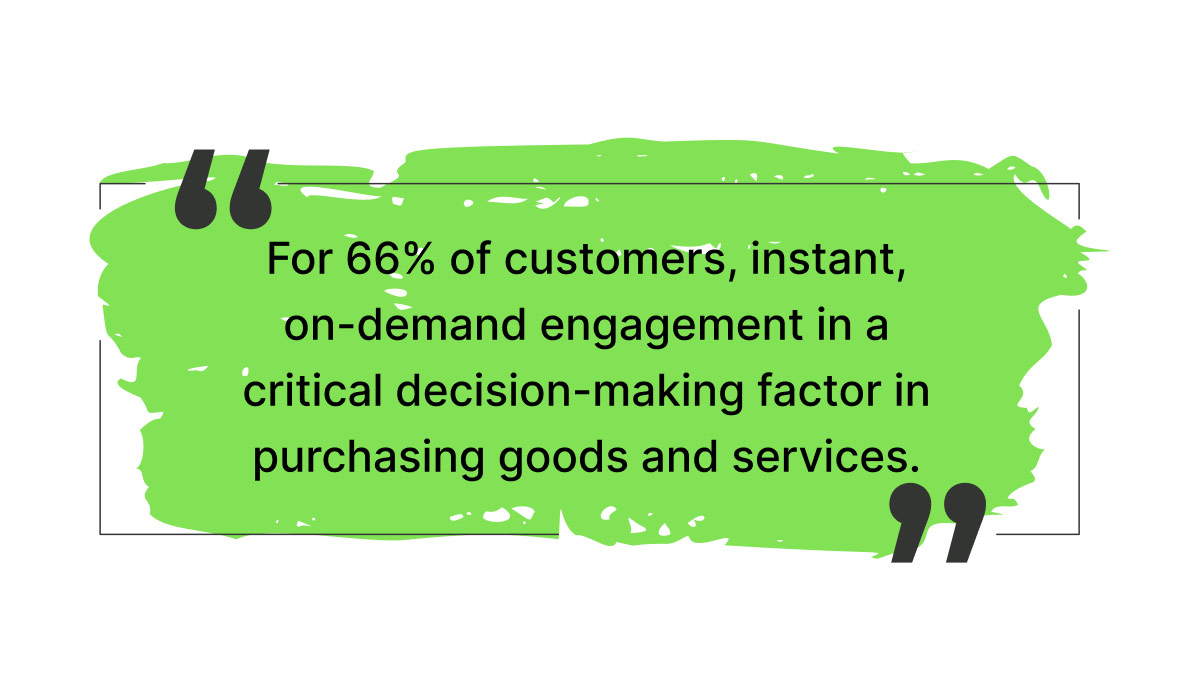 Customer Service
Customer Service

20 September, 2023

In today’s business landscape, where brands and websites vie for our attention, understanding the nuanced differences between Customer journey vs. User journey can be the key to unlocking a seamless online experience.
While the terms might seem interchangeable, they each hold a distinct role in shaping how we interact with businesses and their digital platforms.
In this article, we’ll explore the seven key differences between customer journey and user journey and why they matter for your business.
Customer journey and user journey are two phrases that are frequently used in this context. While they may sound similar, they represent distinct aspects of the customer experience.
Well, before heading to the details, let’s make your further reading easier through this quick table below highlighting the key points of the user journey vs customer journey.
| Factors | Customer Journey | User Journey |
| Definition | End-to-end customer experience with the brand | How you interact with a specific product or service. |
| Scope | Broader | Narrower |
| Goals and objective | Create a positive overall experience, build loyalty, and increase customer lifetime value. | Ensure smooth and efficient interaction, and achieve specific user goals within the product/service. |
| Consideration variation | Highly individual, influenced by emotions, motivations, and external factors. | More focused on the specific product/service features and usability. |
| Standards and variation | Can vary greatly depending on the customer’s context | More consistent based on product/service design. |
| Decision making process | Complex and influenced by multiple factors like price, reviews, or brand perception | Focused on achieving goals within the product/service. |
| Implementation focus | Journey stages that impact business KPIs | Specific improvements to product/service based on user feedback. |
Customer Journey
The customer journey refers to the entire end-to-end experience that a customer undergoes when interacting with a brand or business. It encompasses all the touchpoints to interact with the customers, both online and offline, from the initial awareness of the brand to the post-purchase interactions and beyond.
This concept focuses on building and maintaining a long-term relationship with the customer, fostering loyalty and satisfaction.
User Journey
In contrast, the user journey is a narrower concept that concentrates specifically on the steps and interactions a user takes within a digital platform, such as a website or mobile app. It emphasizes optimizing the user’s experience, ensuring usability, and enhancing satisfaction while navigating through the digital interface.
Customer Journey
The customer journey has a broad and encompassing scope. It extends across the entire spectrum of interactions that a customer has with a brand, product, or service. This journey involves both online and offline connection points. It begins when you first discover the brand, and continues as you research products, make a purchase, get post-purchase support, and stay engaged over time.
It considers various channels and platforms, including social media, websites, physical stores, customer service centers, and more. Essentially, the customer journey covers every aspect of the customer’s relationship with the brand, aiming to create a holistic and positive experience.
User Journey
the user journey has a more focused and limited scope. It concentrates exclusively on the interactions and experiences of a user within a specific digital platform or interface, such as a website or mobile application.
User experience is concerned with the user’s navigation through the digital environment, including actions, decisions, and reactions while using the platform. It primarily revolves around ensuring the usability and efficiency of the digital interface, making it user-friendly, intuitive, and satisfying.
The user process does not extend beyond the boundaries of the digital experience, making it narrower in scope compared to the customer journey.
Customer Journey
Goal:
80% of customers are more likely to buy when businesses offer a personalized experience.

The primary goal of the customer journey is to nurture and maintain a long-term relationship between the customer and the brand. It aims to create a positive and memorable experience at every touchpoint, from initial awareness to post-purchase interactions and beyond.
Objectives:
Building brand loyalty is a key objective of the customer journey. It seeks to turn first-time customers into repeat buyers and advocates for the brand. The customers are satisfied with their overall experience is crucial to ensure this includes providing excellent customer service and addressing any issues promptly.
The customer journey aims to shape a positive perception of the brand, ensuring that customers associate it with trustworthiness, reliability, and value. Brands can maximize the customer’s lifetime value by encouraging repeat purchases and upselling additional products.
User Journey
Goal:
This is the core point where you find differences between customer experience vs. user journey but at the same root.
The primary goal of the user journey is to optimize the user’s experience within a specific digital platform, such as a website or mobile app. It focuses on usability, functionality, and overall satisfaction.
Objectives:
Ensuring that users can easily and efficiently complete tasks within the digital interface is a core objective. This includes intuitive navigation and clear information presentation. Encouraging user actions that align with the platform’s goals, such as making a purchase, signing up, or engaging with content.
Striving to provide users with a positive and enjoyable experience, can lead to higher retention rates and positive reviews. Continuously gathering user feedback and data to make improvements and enhancements to the digital platform.
Customer Journey
The customer journey mainly includes a great variation in touchpoints such as social media interactions, email communications, in-store visits, customer service calls, and more.
It encompasses a wide range of touchpoints, both online and offline. This variation in touchpoints includes social media interactions, email communications, in-store visits, customer service calls, and more. Customers talk to brands in many ways. They use websites, apps, stores, social media, and even print. All these ways make communication between customers easy.
Customer-centric companies are 60% more profitable than companies that aren’t.

Customer experience takes a long-term perspective, considering interactions that occur over an extended period. It involves nurturing relationships, building trust, and ensuring consistency across different touchpoints. As customers progress through their journey, their needs and expectations can vary significantly. Brands must adapt to these changing needs to maintain a positive customer experience.
User Journey
The user journey primarily focuses on digital platforms and interfaces, which limits the scope of consideration to the online realm. User journeys revolve around specific interactions within a digital environment, such as navigating a website, using an app, or completing an online form.
For example, we can say about the customer match audience solution that is now the best partner for millions of businesses to connect with the right customers at scale.
Furthermore, user journeys frequently take a shorter-term view, focusing on immediate usability and user satisfaction during a single interaction or session.
User journeys often have a shorter-term perspective, emphasizing immediate usability and user satisfaction during a single interaction or session. Maintaining consistency within the digital interface is crucial in user journeys. Users expect seamless and intuitive experiences throughout their interaction with the platform.
Customer Journey
Standards:
The standards for measuring the customer journey look at the whole picture of the customer’s experience, not just individual touchpoints. The key elements may include:
The standards for measuring the customer journey are often holistic and multifaceted, considering various touchpoints and customer interactions.
Measurement metrics:
CLV quantifies the overall value a customer contributes to a brand over the course of their relationship. It’s a critical metric for assessing the long-term impact of the customer journey. NPS gauges customer satisfaction and loyalty by asking customers how likely they are to recommend the brand to others. Surveys and feedback mechanisms assess customer satisfaction at different touchpoints, providing insights into areas of improvement.
Monitoring how customers perceive the brand and its reputation is crucial. Social listening tools can help gauge public sentiment. tracking the rate at which customers disengage or leave the brand provides insights into areas of dissatisfaction.
User Journey
Standards:
User journey measurement standards are typically more focused on usability, functionality, and user experience within digital interfaces mainly to engage with customers.
Measurement metrics:
It measures the percentage of users who leave a webpage without taking any action. A high bounce rate can indicate a poor user journey. This metric keeps tabs on the portion of users who successfully carry out a preferred action, like making a purchase or signing up.
The amount of time users spend on a website or app can indicate engagement and interest.
Gathering user feedback through surveys, usability testing, and user reviews provides valuable insights into the user journey’s effectiveness.
The decision-making process is another main point where you will get a contrast between user experience and customer journey.
The decision-making process, also called the user or customer journey, this is essential. It helps us understand how people businesses use products or services and make choices.
For 66% of customers, instant, on-demand engagement in a critical decision-making factor in purchasing goods and services.

Although these expressions are occasionally used interchangeably, they have different meanings and are frequently employed in various contexts:
Customer Journey:
The phrase ‘customer journey’ is mainly about businesses and marketing. It includes all the times a customer interacts with a product or service—like when they think about it, buy it, and use it.
It usually starts when a customer realizes they need something or have a problem. Then, they look at choices and decide what to buy, and after that, they use the product, give feedback, and maybe become loyal customers.
Marketers and businesses use customer journey mapping to better understand and optimize these stages, with the aim of enhancing the overall customer experience and driving customer satisfaction and retention.
User Journey:
The term User journey is often associated with the design and usability of digital products, websites, or software applications. It represents how a person navigates a digital connection. The first connection point is where it all starts. After that, users navigate, carry out tasks, and may come back or make purchases.
User experience (UX) designers and product developers use user journey mapping to identify pain points, improve usability, and enhance the overall user experience of a digital product.
The fundamental distinction between the customer journey and the user journey in terms of implementation focus is in the emphasis placed on them and how they are applied in various contexts:
Customer Journey
The implementation focus of the customer journey is primarily oriented toward marketing, sales, and overall customer experience management. Businesses and organizations use customer journey mapping and analysis to understand and enhance the entire end-to-end experience a customer has with their brand, product, or service.
Implementation efforts may involve optimizing marketing strategies, improving customer service touchpoints, tailoring product offerings, and building brand loyalty. The primary goal is to maximize customer satisfaction, retention, and lifetime value by delivering a seamless and satisfying experience at every stage of the journey.
User Journey
The implementation focus of the user journey is centered on the design and usability of digital interfaces and experiences. User journey mapping is used by UX (user experience) designers, product managers, and developers to create user-centric digital products and applications.
In the digital age, we might focus on the user interface (UI), simplify navigation, increase accessibility, and make sure users can accomplish their goals with ease. The primary goal is to create a user-friendly and efficient digital experience that leads to higher user satisfaction, engagement, and conversion rates.
While both customer journeys and user journeys are essential concepts for businesses, they serve different purposes and require distinct approaches. Understanding these differences is crucial for tailoring strategies that enhance both the overall customer experience and the usability of digital platforms.
By recognizing the unique characteristics of each journey, companies can tailor their strategies to better meet the needs of their audience, ultimately driving success in the digital landscape.